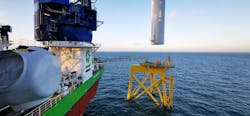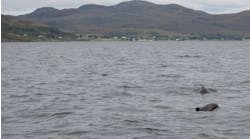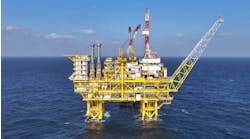The United States has only one offshore wind energy farm, but that could change soon, and in a big way, according to a recent CNBC report. While the Block Island Wind Farm off Rhode Island began remains the only offshore wind farm in the US, that is about to dramatically change.
According to the Department of Energy, offshore wind has the potential to generate more than 2,000 GW of capacity per year, nearly double the nation’s current electricity use. Even if only 1% of that potential is captured, nearly 6.5 million homes could be powered by offshore wind energy within the next decade.
“We are in an incredible growth period,” said Laura Morton, a senior director at the American Wind Energy Association in Washington, D.C. She cited a recent white paper from the Special Initiative for Offshore Wind that projects a $70-billion business pipeline in the U.S. by 2030.
A study co-authored by New York, Massachusetts, Rhode Island and the Clean Energy States Alliance found that developing 8,000 MW of offshore wind from Maryland to Maine by 2030 could create up to 36,000 full-time U.S. jobs. What’s more, said Morton, “to build and operate an offshore wind farm requires a diverse workforce of 74 different occupations,” from engineers to pipefitters.
Costs have come down, technology has gone up, states have mandated ambitious renewable-energy goals, and the federal government has leased 15 commercial ocean sites for $472 million.
“Costs have been reduced by about 17% in the US over the last five years,” said Thomas Brostrom, US CEO of Orsted, a Danish energy company specializing in offshore wind and a partner in several stateside projects. The megawatt-per-hour rates for projects are at a level very competitive with other energy sources, Brostrom was quoted to say.
Another economic driver is advanced technology leading to larger, more efficient turbines that capture more wind. General Electric’s Paris-based unit GE Renewable Energy made a splash in July by introducing the Haliade-X 12 MW. Standing nearly 850 feet tall, with three rotors each spanning more than 720 feet, a single Haliade-X can power up to 16,000 homes.
GE had a leading US market share of 41.4% at the end of 2018, per the American Wind Energy Association, followed by Danish wind giant Vestas (24.2%) and Siemens Gamesa Renewable Energy (19.7%).
Northeast states hold the most offshore wind potential. In New England there are four times as many proposals than those for natural gas-fired power plants, according to ISO England, a not-for-profit regional transmission organization. A 2017 report from the DOE’s National Renewable Energy Laboratory estimated that by 2027, New England could reach 144 GW of offshore wind capacity, with Maine and Massachusetts leading the way at 65 GW and 55 GW, respectively.
Massachusetts has come a long way since the debacle known as Cape Wind, a proposal dating back to 2001, which proposed to build 130 turbines in Nantucket Sound, within eyeshot of Cape Cod, Nantucket and Martha’s Vineyard. The project was ultimately scuttled in 2017 following a series of legal and financial setbacks.
At present, there are several current projects in the Bay State being developed by Vineyard Wind, a partnership of Copenhagen Infrastructure Partners and Avangrid Renewables, based in New Bedford, Massachusetts. First in the queue is so-called Vineyard Wind 1, situated more than 15 mi (24 km) offshore. The developer had planned to flip the switch on the nation’s first utility-scale offshore wind farm in 2022, using an array of 84 9.5 MW Siemens turbines to electrify at least 400,000 customers.
But in August the Department of Interior’s Bureau of Ocean Energy Management, the agency that leases and approves the sites, halted the $2.8-billion project. BOEM said it wanted new studies that account for the “cumulative impacts” of future offshore wind projects proposed in the area.
Despite the setback, Erich Stephens, Vineyard Wind’s chief development officer, described the BOEM decision as a sign of just how much potential offshore wind energy offers. “BOEM realizes they underestimated the rate of build-out of the US offshore wind industry and had to go back and look at that,” Stephens was quoted to say.
Elsewhere in New England, Connecticut officials have selected Vineyard Wind’s adjacent 804-MW Park City project as the winner of its first offshore wind solicitation. The state has passed a law requiring 2,000 MW from offshore wind by 2030. Scheduled to go online in 2025, Park City is expected to provide 14% of Connecticut’s entire energy needs.
Last year Connecticut awarded two smaller offshore wind projects to Revolution Wind, a 600-MW joint venture between Orsted and Eversource, a regional energy company, with offshore turbines 15 miles south of Rhode Island. That project features a $93 million revitalization of New London’s State Pier. “We still have to get permitting for the project,” said Orsted’s Brostrom, which will take another two years. “Then construction will take another couple of years,” Brostrom was quoted to say. •



